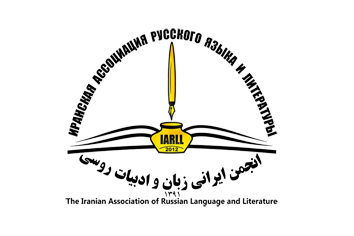DISCURSIVE POTENTIAL OF PARATEXTUAL ELEMENTS OF DRAMA (BASED ON RUSSIAN PLAYS OF THE LATE 20TH CENTURY)
DOI:
https://doi.org/10.61186/iarll.20.25Keywords:
Communicative-Cognitive Space, Consciousness, Dramatic Paratext, Remark, Conventionality, Theatricality, Discursive PotentialAbstract
The communicative-cognitive space of drama is based on dramatic discourse. The work is devoted to the consideration of the potential of dramatic remarks, which are involved in the formation of dramatic discourse as elements of paratext. The variety of remarks, a large list of their functions and tasks in various text situations determine their significant role in the formation of dramatic discourse. This study provides our classification of dramatic remarks. It is based on the communicative tasks of remarks, the degree of their prevalence, and focuses on the values of communication theory, the theory of speech communication. The complexity of the dramatic discourse lies, among other things, in the fact that the consciousness of the recipient (reader) of the play separately “processes” paratextual elements and remarks, realizing the specifics of the genre. This is what helps the reader to appreciate the conventionality and theatricality of the dramatic text in the process of its participation in the discourse of the drama. The discursive potential of the paratextual elements of dramatic discourse is the higher, the more complex the organization of the paratext, the more diverse the palette of its elements.
Extended abstract:
The communicative and cognitive space of drama is based on dramatic discourse. The work is devoted to the consideration of the potential of dramatic remarks that participate in the formation of dramatic discourse as elements of paratext. A variety of remarks, a large list of their functions and tasks in various textual situations, determine their significant role in the formation of dramatic discourse. This study provides our classification of dramatic remarks. It is based on the communicative tasks of remarks, the degree of their prevalence and focuses on the values of the theory of communication, the theory of speech communication. The complexity of dramatic discourse lies, among other things, in the fact that the consciousness of the recipient (reader) of the play separately "processes" paratext elements and remarks, realizing the specifics of the genre. This is what helps the reader to assess the conventionality and scenic character of the dramatic text in the process of its participation in the discourse of drama. The higher the discursive potential of the paratext elements of dramatic discourse, the more complex the organization of the paratext, the more diverse the palette of its elements.
The proposed classification of remarks includes six varieties. The first is characterized by a statement of fact, brevity, and includes one word. It has the name "replicating truncated representative". It is the dramatic speech (remark) that operates with such a construction. Furthermore, it is characterized by syntactic compression. The remark concentrates on the format of knowledge, objectified by a single lexeme.
The second type is called "replicating truncated descriptive". This is most often a semi-predicative construction. Its communicative and cognitive potential lies in its ability to produce a cognitive extension of a certain format of knowledge by localizing the description in a sentence fragment and separating it from the syntactic construction.
The third variety is called the "replicating representative". This is a construction that includes no more than one complete two-part short independent sentence (which does not contain the name of the character as a designation of a communicant who owns a communicative initiative), having one predicative center, stating the physical, mental, temporal position of all the components of the mise en scène.
The fourth variety is called the "replicating descriptive". It includes one common lengthy or more complete sentence. The construction is designed to describe a phenomenon, an object, an action. The communicative and cognitive potential of such a remark, which opens a group of common statements, is small, but it differs significantly from the previous ones, since it translates the remark from the category of the accompanying remark stating inclusions into the category of an independent author's descriptive statement.
The fifth variety is called the "non-extended narrative", and consists of one or two sentences containing in general no more than two predicative centers, revealing a certain intention and the author's attitude to the monologue. The communicative goal is to create an idea of the events taking place in the reader. It is achieved by a minimum number of syntactic constructions. The communicative and cognitive potential of the remarks of this category is designed to provide a fairly complete picture of the stage actions without additional cognitive efforts from the reader.
The sixth variety is called "common narrative". A remark consists of any number of sentences containing more than two predicative centers. The author's communicative initiative in this case finds long-term application in a direct speech party. CC the potential of this category of remarks is high due to the assignment by the author of the communicative and cognitive functions of the reader.
Downloads
Published
How to Cite
Issue
Section
License
Copyright (c) 2022 Issledovatel'skiy Zhurnal Russkogo Yazyka i Literatury

This work is licensed under a Creative Commons Attribution 4.0 International License.
![]()
"Creative Commons Attribution 4.0 International (CC-BY 4.0)"


